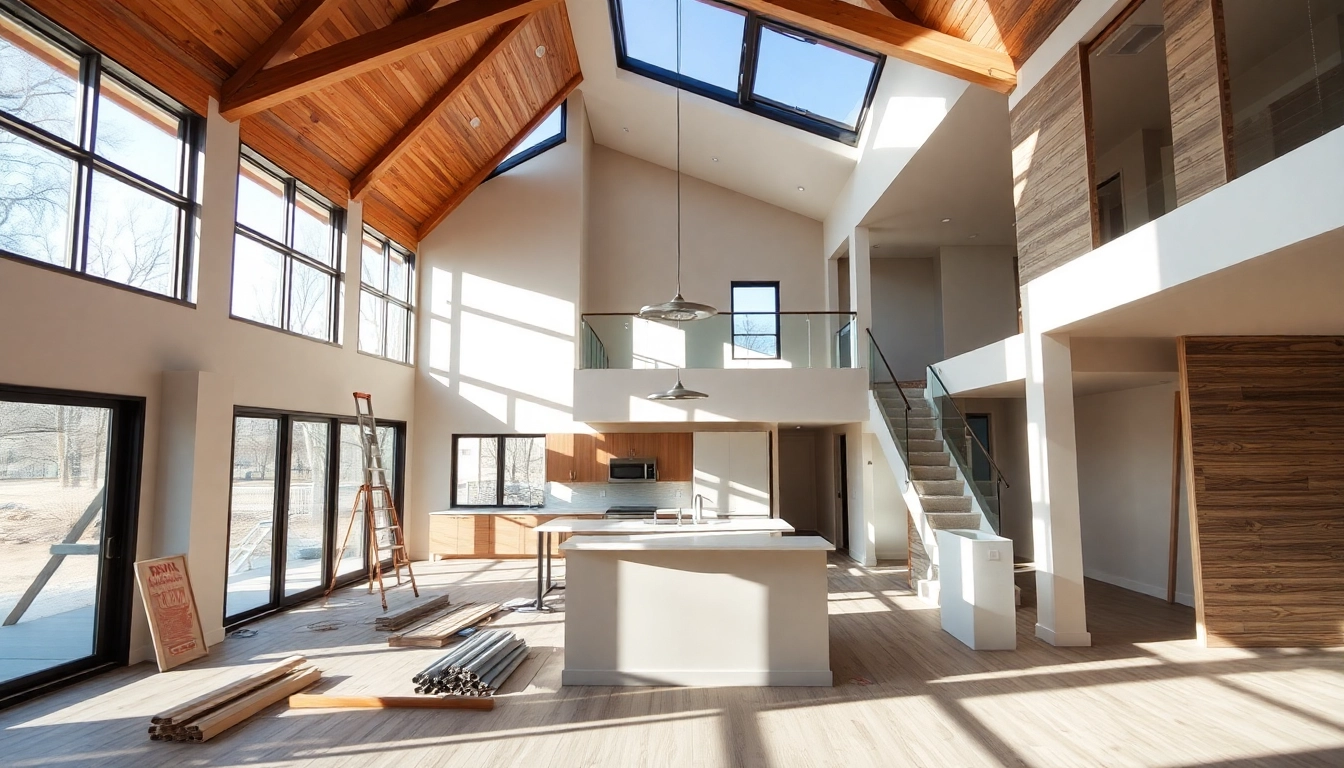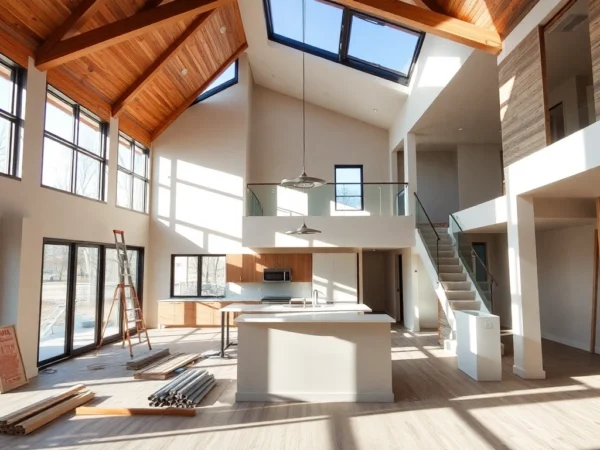Expert Remodeling Services to Elevate Your Home’s Style and Functionality
Embarking on a remodeling project is a transformative journey that enhances the functionality, aesthetic appeal, and value of your home. Whether you’re updating a single room or undertaking a complete overhaul, understanding the core aspects of remodeling is critical to achieving your desired outcomes. In this comprehensive guide, we explore essential concepts, planning strategies, design trends, implementation practices, and ways to maximize your investment. With insights drawn from industry leaders and expert practices, this article aims to empower homeowners and property managers to navigate the remodeling process confidently and effectively.
Understanding Remodeling: Key Concepts and Benefits
What is Home Remodeling and Why It Matters
Remodeling, often referred to as home renovation or improvement, involves altering or upgrading parts of a property to meet new needs, aesthetic preferences, or functional requirements. Unlike simple cosmetic updates, remodeling typically entails structural modifications, system upgrades, and reconfigurations that significantly change the existing layout or design of a space. This process can encompass everything from kitchen and bathroom upgrades to entire home renovations. Remodeling has become an essential component for homeowners seeking to optimize their living environments and enhance property value.
In today’s real estate market, remodeling is not just about maintaining a house; it’s an investment that can deliver substantial returns. Well-executed remodeling projects improve not only visual appeal but also structural integrity, energy efficiency, and overall comfort. For homeowners planning to sell, strategic remodeling can significantly increase resale value, often recouping more than the initial expenditure. According to industry reports, ROI on certain remodeling projects, such as kitchen and bathroom upgrades, can range from 60% to 80%, making it a financially sound decision.
Differences Between Renovating and Remodeling
While often used interchangeably, renovation and remodeling serve distinct purposes within property enhancement. Renovation refers to cosmetic updates that improve the aesthetic and functional aspects of a space without altering its fundamental structure. Examples include repainting walls, replacing flooring, or updating fixtures. Renovations are typically more budget-friendly and faster to complete, aimed at refreshing a home’s appearance.
Remodeling, by contrast, involves a deeper transformation that often includes structural modifications, reconfiguring spaces, or integrating new systems such as electrical, plumbing, or HVAC. For instance, enlarging a kitchen, adding a new bathroom, or redesigning an open-concept living area are remodeling activities. This process usually requires permits, detailed planning, and professional expertise, especially when load-bearing walls or other critical components are involved.
Both renovation and remodeling can dramatically increase a home’s value and functionality. However, understanding their differences helps homeowners set realistic expectations and budget accordingly. For more detailed distinctions, you can explore [Rocket Mortgage’s comprehensive explanation](https://www.rocketmortgage.com/learn/renovation-and-remodeling).
Core Benefits of Professional Remodeling Projects
- Enhanced Aesthetic Appeal: Professional remodelers bring expertise in blending style with practicality, resulting in visually stunning and cohesive interiors.
- Improved Functionality: Remodeling can optimize space utilization, add storage solutions, and modernize layouts to better serve your lifestyle.
- Increased Property Value: Strategic upgrades attract potential buyers and command higher resale prices, especially in competitive markets like Rochester, NY.
- Energy Efficiency and Cost Savings: Updating insulation, windows, and appliances reduces utility bills and environmental impact.
- Personal Satisfaction and Comfort: Tailoring your home to your preferences creates a more enjoyable living environment.
Engaging professionals ensures quality craftsmanship, adherence to safety codes, and timely completion, ultimately safeguarding your investment and peace of mind.
Planning Your Remodeling Project: Steps and Best Practices
Defining Goals and Budgeting Effectively
The foundation of a successful remodeling project lies in clear goal setting and realistic budgeting. Begin by identifying specific objectives: Are you aiming to modernize your kitchen, expand living space, or improve energy efficiency? Prioritize needs versus wants, and consider long-term benefits.
Creating a comprehensive budget involves evaluating all potential costs, including materials, labor, permits, and contingencies. It is advisable to allocate an additional 10-20% for unforeseen expenses. Establishing a contingency fund minimizes the risk of project delays or compromises on quality. A detailed scope of work, which includes timelines and milestones, helps maintain financial control and accountability.
Selecting the Right Remodeling Contractors
Choosing a qualified contractor is crucial for project success. Seek professionals with proven experience in the specific type of remodeling you desire, such as kitchen or bathroom renovation. Verify credentials, licenses, and insurance. Review portfolios and customer testimonials, and request detailed bids to compare pricing and scope.
Effective communication and transparency are key. A reputable contractor will provide clear timelines, work processes, and warranty details. For Rochester residents, local companies like Bryce & Doyle Craftsmanship or Four Points Remodeling are renowned for their expertise and reliability.
Design Considerations for Functional and Stylish Spaces
Design is where creativity meets practicality. Collaborate with designers or use digital tools to visualize transformed spaces. Focus on layout flow, lighting, and ergonomics. Incorporate timeless elements alongside modern innovations to balance aesthetic appeal with longevity.
Key considerations include choosing durable, eco-friendly materials, creating flexible layouts adaptable to changing needs, and selecting finishes that complement the overall home style. Incorporate storage solutions to maximize space utilization, especially in smaller homes.
Consulting with professionals ensures your design aligns with local building codes and sustainability standards, enhancing both functionality and environmental responsibility.
Design Trends and Ideas in Home Remodeling
Popular Styles and Modern Innovations
Contemporary home remodeling emphasizes clean lines, minimalist aesthetics, and open-plan layouts. Popular styles include Scandinavian, industrial, farmhouse, and mid-century modern. Integration of smart home technology—such as automated lighting, thermostats, and security systems—is increasingly a staple in forward-thinking remodels.
Innovative techniques like 3D rendering and virtual reality walkthroughs enable clients to explore design options before construction begins, reducing surprises and enhancing satisfaction. Modular furniture, concealed storage, and multi-functional spaces are trending to optimize small or irregular layouts.
Eco-Friendly and Sustainable Remodeling Options
Sustainability is no longer optional; it’s a necessity. Eco-conscious remodeling involves selecting renewable materials, energy-efficient appliances, and green building practices. Solar panels, high-efficiency insulation, low-VOC paints, and recycled content materials contribute to diminished environmental footprints.
In Rochester and similar markets, there is a growing demand for LEED-certified projects and net-zero energy homes, which can significantly lower utility costs and qualify for tax incentives. Partnering with suppliers specializing in sustainable products guarantees the longevity and eco-friendliness of your remodel.
Innovative Materials and Techniques for Longevity
Advancements in construction materials include composite countertops, fiber-cement siding, and porcelain tiles that resist wear and weathering. Techniques such as spray foam insulation, underfloor heating, and smart ventilation systems introduce comfort and efficiency.
Utilizing these innovations ensures your home remains durable, low-maintenance, and aligned with future trends. Professional remodelers can guide you toward the best products suited for your specific climate and needs, boosting your property’s resilience and lifespan.
Implementation and Oversight: Ensuring Quality Results
Step-by-Step Construction and Installation
The execution phase transforms plans into reality. An organized approach involves breaking down the project into stages: demolition, framing, system upgrades, finishes, and inspections. Clear schedules and coordination among tradespeople—such as carpenters, electricians, and plumbers—ensure efficiency and safety.
Pre-construction preparation includes obtaining permits, securing materials, and setting up logistics. Continuous supervision minimizes errors and delays, with regular site inspections verifying adherence to specifications. On-site communication remains vital for promptly addressing issues.
Managing Timelines and Communication
Effective project management relies on consistent updates and transparency. Utilize project management tools to track progress, budgets, and change orders. Regular meetings with stakeholders help to align expectations and resolve conflicts swiftly.
Clear documentation of decisions and modifications ensures everyone is aligned, reducing misunderstandings that can derail timelines or inflate costs. Engaging a dedicated project manager can bring valuable expertise, especially for complex or large-scale remodels.
Quality Checks and Final Touches for Lasting Value
The final stage involves thorough inspections, cleanup, and client walkthroughs. Verify that all work complies with safety standards, building codes, and quality benchmarks. Address punch-list items promptly to ensure complete satisfaction.
Adding finishing touches like paint touch-ups, hardware installation, and detailed cleaning elevates the project’s professionalism. A well-executed post-completion review ensures durability and prepares the home for maintenance and future upgrades.
Measuring Success and Maximizing Your Investment
Key Performance Metrics for Remodeling Projects
Assessing the success of a remodeling project involves evaluating various metrics:
- Budget Adherence: Did the project stay within financial parameters?
- Timeline Compliance: Was the project completed on schedule?
- Quality Standards: Are the workmanship and materials up to expectations?
- Functional Improvements: Has the space become more usable or efficient?
- Energy Savings: Have utility costs decreased post-remodel?
- Resale Value: Has the property’s market value increased?
Regular monitoring and documented feedback help refine future projects and ensure ongoing value.
Boosting Home Value Through Strategic Upgrades
Focus on high-impact areas such as the kitchen, bathrooms, and curb appeal to maximize ROI. Modern fixtures, quality materials, and thoughtful layouts attract buyers and justify premium pricing.
In Rochester, studies show that remodels with contemporary appeal and energy efficiency features tend to outperform outdated properties. Incorporating universal design principles also broadens appeal, making homes accessible and safe for all ages.
Post-Remodeling Maintenance and Future Repair Tips
True value comes with proper upkeep. Establish a regular maintenance schedule—cleaning, inspections, and minor repairs—that extends the life of new installations. Keep documentation and warranties provided by contractors for reference.
Addressing issues promptly prevents deterioration, saving money and preserving the integrity of your remodel. Invest in sustainable products and systems that require less maintenance, ensuring your renovation remains impactful for years to come.

